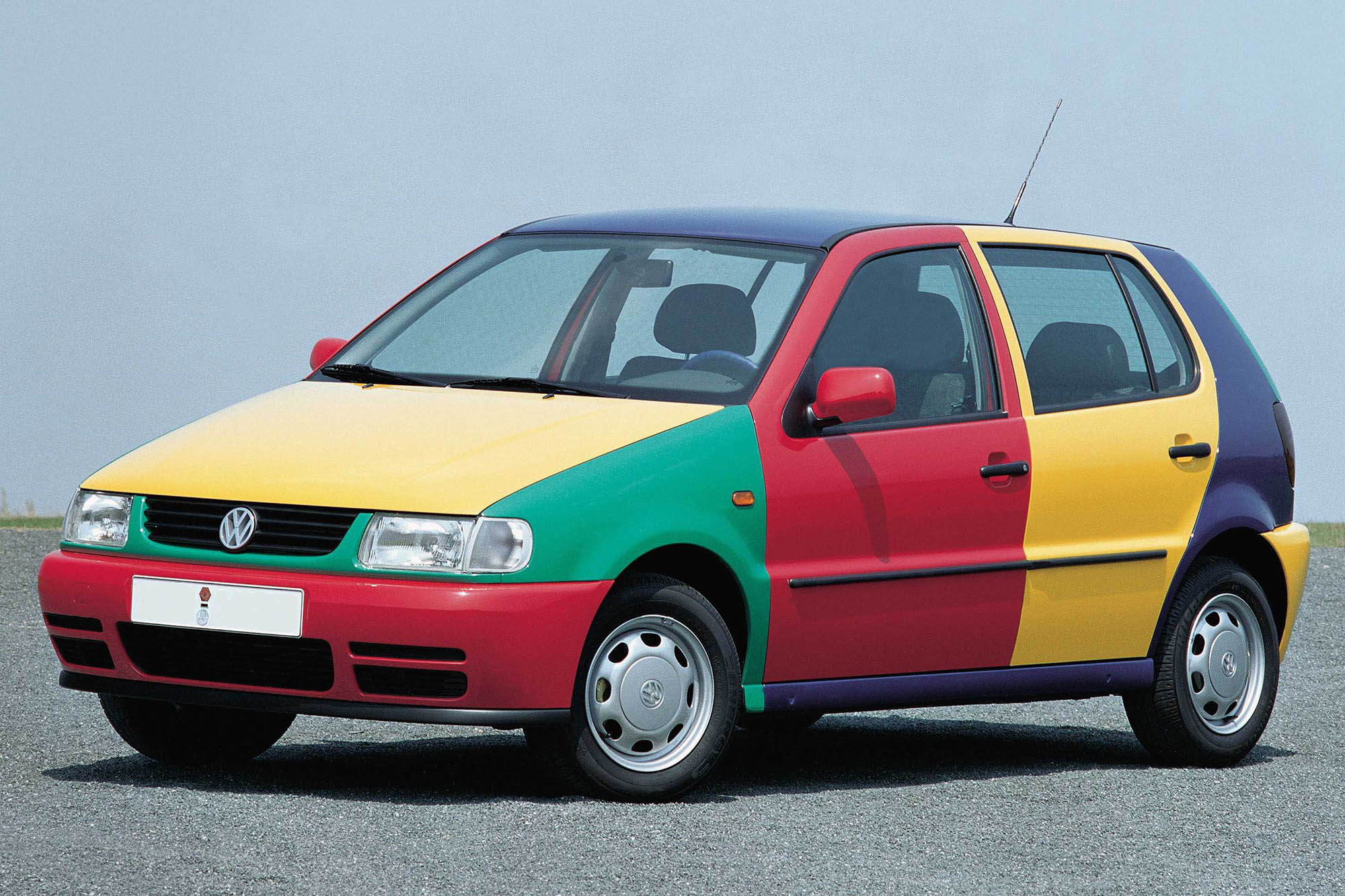8 Things to Consider Before Picking Your New Car's Color
Availability, cost, ease of care, and safety are all on the table when selecting automotive paint.
 Volkswagen
Volkswagen
QuickTakes:
Few things can give a car personality like the perfect paint color — just look at how the multicolored Harlequin paint job transforms the Volkswagen Polo. That being said, there's more than just style to consider when choosing which color you want for your brand-new vehicle. Here's a walk-through of the ways picking paint can affect your ownership experience.
Consider the Cost
The ubiquitous gray, white, and black have long been some of the most popular car colors. Unique colors are often tagged with an additional fee for anyone who wants to add them as an option. The pricing of Porsche's Paint to Sample program, which features a large selection of historic hues, surges well past what's available from the standard catalog.
How Hard Is the Color to Find?
The popularity of grayscale vehicles has left many dealers unwilling to order models painted anything outside the norm. This can make it a challenge to find a vehicle that's wearing something unique. For sports cars and special models, the task can be easier, but if you want a less distinctive model in an out-of-the-ordinary shade, you may have to be patient in searching for a dealer with existing inventory, or even wait for one to be built to order.
If your car's color is important to your long-term enjoyment, then the wait is likely worth it. If it's a lease you'll be trading in in a few years, however, you may want to swap style for expediency.
How Easy Will It Be to Sell a Car in Your Color of Choice?
There's a reason why dealers are often reluctant to order outside of bland color choices: the perception that bright, out-of-the-ordinary hues are difficult to sell. In reality, it's more complicated than that, as some types of vehicles sell better in brighter colors, while others are easier to move in white. A study by automotive research site
Not All Colors Are a Match for All Options
Automakers don't often allow à la carte options with their cars and trucks. This means that some features and equipment are tied to specific models, with paint color falling under that banner.
Usually, this applies to interior cabin designs, with some exterior colors matching exclusively with a fixed set of interior hues. You might only get a black interior with a certain list of paint colors, or a tan color with another, with no ability to mix and match.
Often, the wildest or most offbeat colors are tied to specific trim levels and options packages, which could dial up the price past the point you're willing to pay if all you are interested in is the paint job.
Convenience Is Also Key
In general, a lighter paint color will do a better job of disguising how dirty a car or truck is versus a darker color, which is more apt to show dust, salt, and pollen. If you regularly wash your vehicle, this might not be an issue. But if you consider washing a chore, and don't live near a car wash, you may want to rethink dark paint.
Consider, too, whether the paint job you are choosing comes with any special care instructions. Matte paint, for example, requires regular hand-washing and can't be waxed or polished, which makes it much more maintenance intensive than other finishes.
Keeping Cool is More About Finish Than Color
When it comes to keeping your cabin cool, the difference between a black and a white vehicle is measurable — but negligible. That's because reflectivity plays a key role in heat absorption.
Since a shiny surface reflects more light than a matte one, under identical conditions, the cabin of a shiny black vehicle will stay cooler than the interior of a white vehicle with a matte finish. A quality window tint, a sunshade, and a shady spot can also help keep your car's interior cool when it's parked.
Is Color a Safety Issue?
Most people are familiar with the old warning that a red car is a magnet for speeding tickets. But what about safety? Is it possible that some vehicle colors are more likely to be involved in crashes than others?
One study by Monash University found that white cars were 12% less likely to be involved in collisions than any other. The theory is that lighter colors, like white, are simply easier to see in the widest range of weather and driving conditions, which makes them easier to avoid. This seems to be supported by the fact that black was rated lowest on the same study's safety scale.
Can Your Color of Choice Be Easily Repaired?
If you do get into a fender bender, the paint you choose for your car can have an impact on the ease and cost of repair. This is especially true for matte paints. Scratches and scuffs can't be buffed out as with traditional finishes, which means a panel repaint is usually required to take care of even minor damage.
Some pearlescent paints can also be expensive to repair. They're difficult to spot-match and blend in a small area on a large panel, due to the multiple layers involved.



